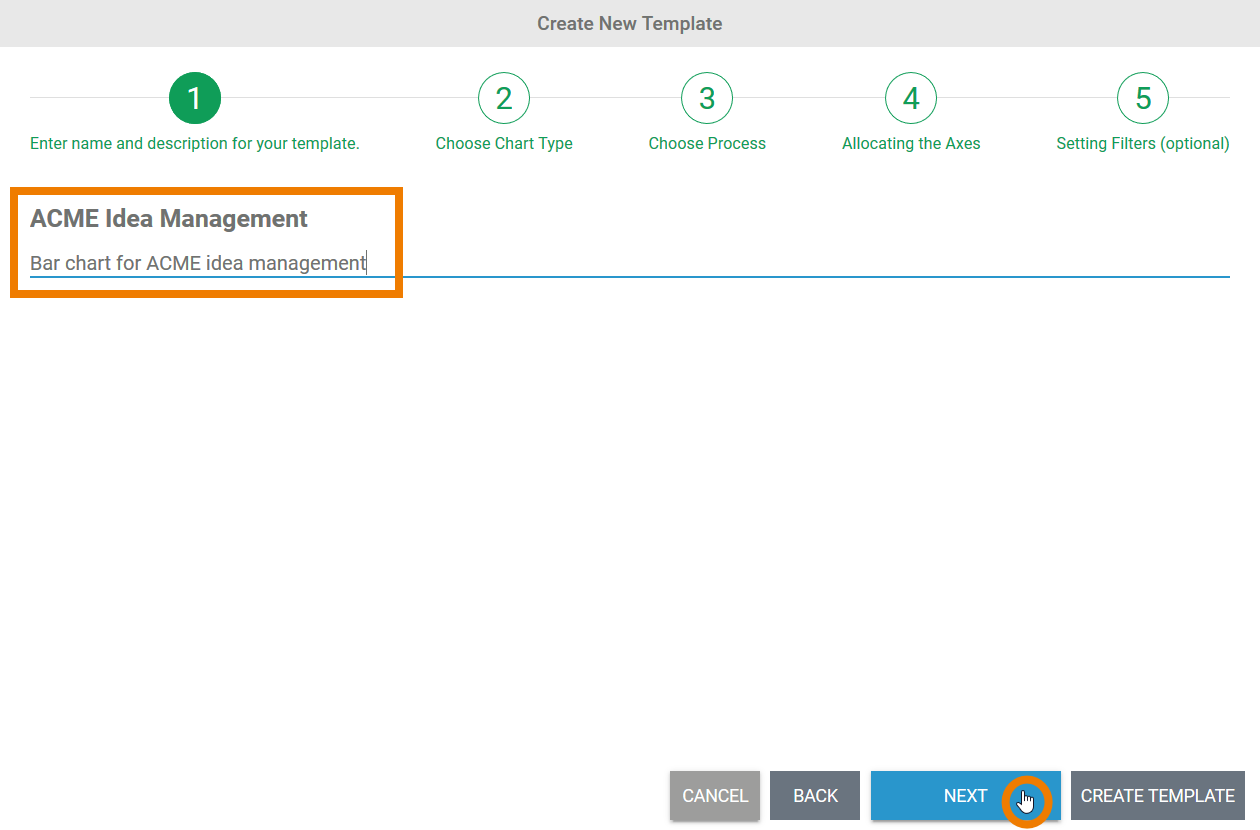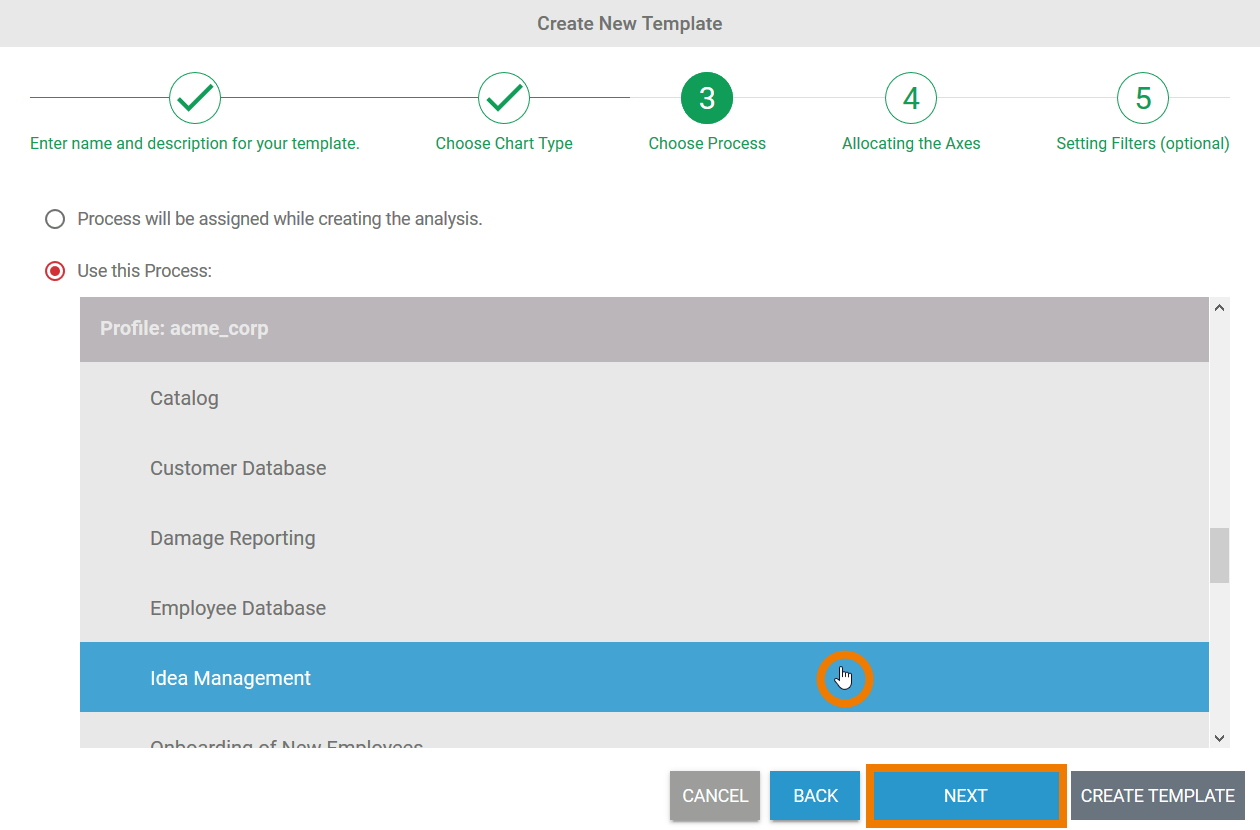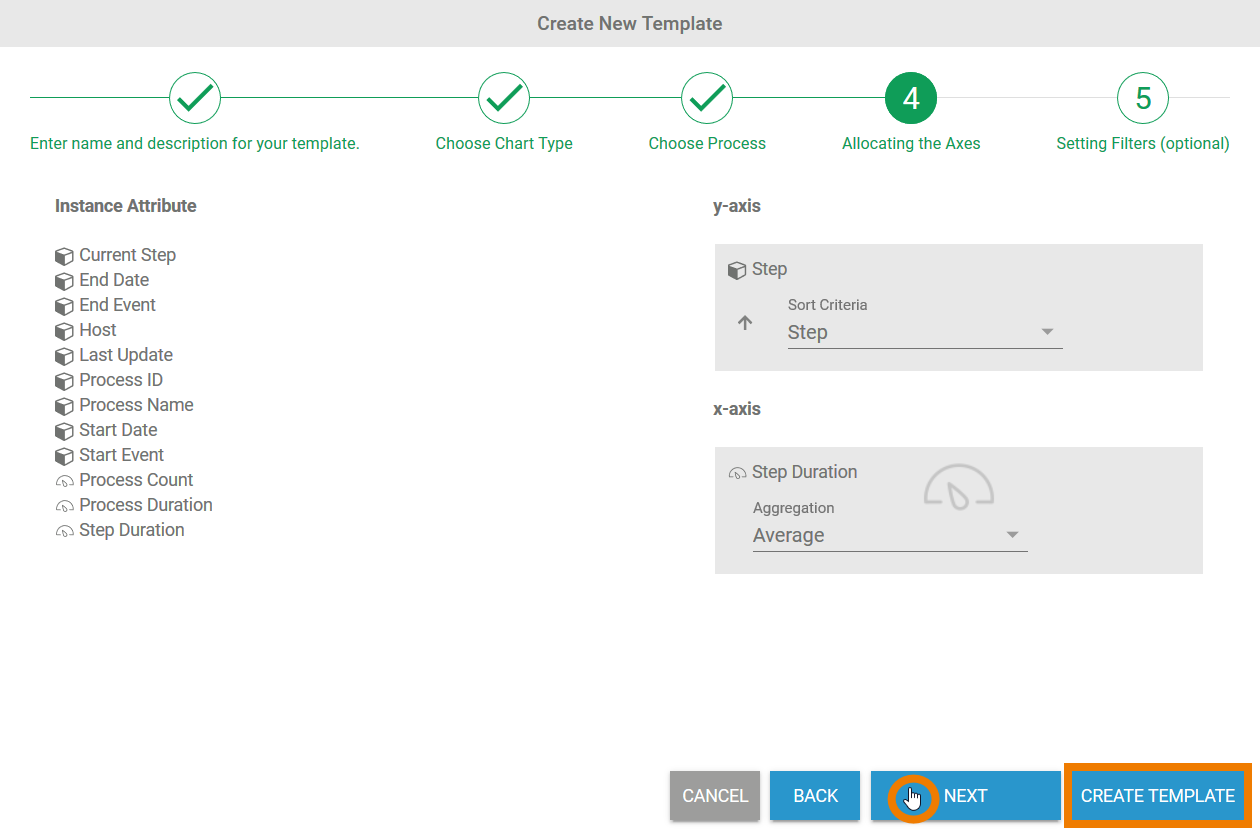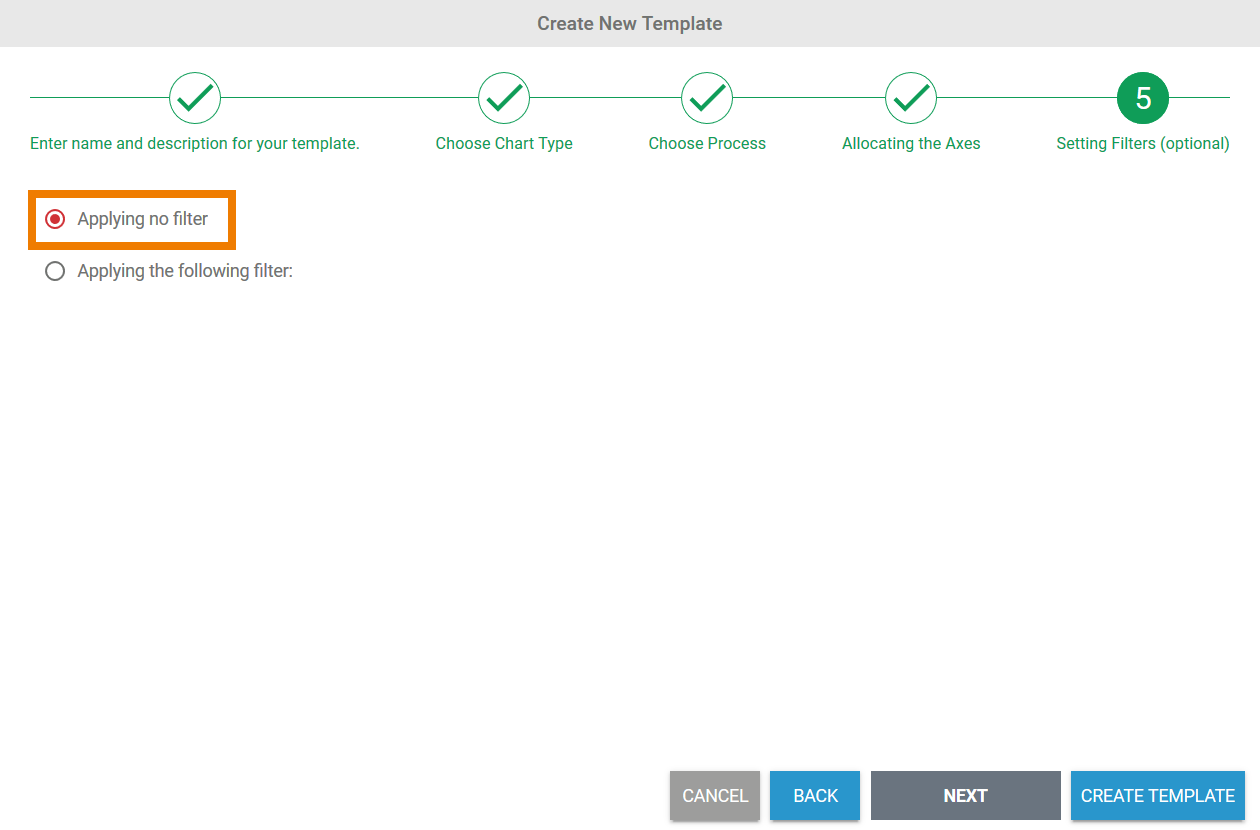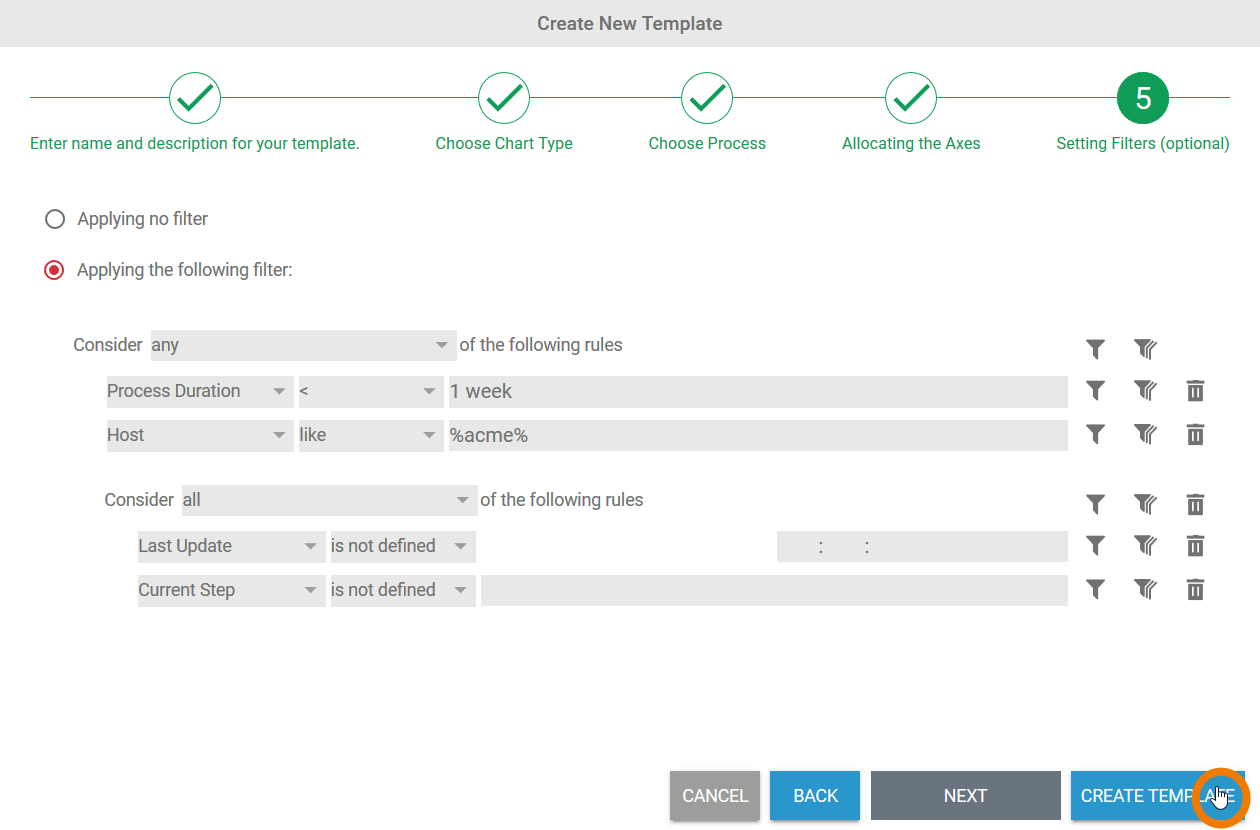Page History
Versions Compared
Key
- This line was added.
- This line was removed.
- Formatting was changed.
This page offers a step by step guide on how to create a new template using the Templates Sidebar. It templates sidebar.
It is also possible to generate a template from an analysis that has already been created . This option is explained on the (refer to Creating a Template from an Analysis page for details on this option).
Creating a New Template
If you wish to create a new template, open the templates the templates sidebar. The four system templates are shown in the content area (see the refer to Using a Template page for details). The To create a new tenmplate, use option Create New Templatebutton is found in the sidebar:

 |
Use the buttons at the bottom of the window to navigate through the wizard:
|
Step 1: Labelling the Template
| In the first step, you have to enter a title and a short description for the template must be entered. The Next button cannot be used until Option Next is only enabled when both the template title and template description lines have been filled. |
The further steps needed for creating a template are conducted carried out in line with the creation of the same way as for creating an analysis.
Step 2: Choosing a Chart Type
| Choose a chart type for your template. The The selected chart type selected is marked with a colored frame. There are nine The following chart types to choose fromare available:
Once a chart type has been selected, you can use the button Next button to move proceed to the next step. |
Step 3: Selecting a Process
| When creating an analysis, the process on which the analysis is to be based must be defined. When creating a template you , you have a choice: you can select the process later or assign a process to the template immediately. The wizard automatically lists all processes that provide data to process mining. The name of the process and the name of the profile in which the process is saved are displayed.
|
Step 4: Allocating Axes
| Anchor | ||||
|---|---|---|---|---|
|
|
| ||||||||||||||||
| The Drag & drop the instance attributes that you want to use are dragged and dropped from the list into the axis areas on the right. Once you have defined all the necessary instance attributes have been defined, you can use the Create Template button to create the chart on the work surfacecreate the template. If you wish to save filters for the template, select Next at at this point to point to open step 5 of the wizard in step 5. |
Step 5: Creating Filters
| Anchor | ||||
|---|---|---|---|---|
|
No filter needs to be defined when creating a It is not mandatory to define a filter when you create a new template, this step is optional. When using a template, filters Filters can still be added and existing filters can be deleted or editedwhen you use a template. You have then also the option to delete or edit existing filters.
| In step 5, the option Applying no filter is selected by default. Using the Create Template button you can still create the template You can still create a template directly without a filter using the Create Template button. | ||||||||||||||
|
| ||||||||||||||
| You can create as many filters as you wish. Filters can also be nested to any depth. When you have finished entering your chosen filters, you can create the templatecreated the filters you want, use the Create Template button to add the new template to the content area. |
The user-defined template is added to the template list in the content area:

| Panel | ||
|---|---|---|
| ||
|
| Panel | ||
|---|---|---|
| ||
